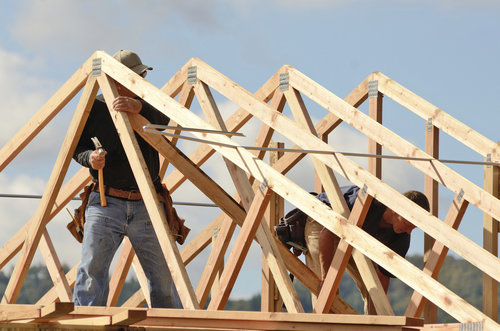Single-family home starts are far below the long-term median – why?
Builder confidence has posted repeated year-over-year gains in recent months, but the amount of single-family housing starts is not rising to match their confidence, according to a report by The Wall Street Journal.
The report looked at the National Association of Home Builders/Wells Fargo Housing Market Index (HMI) and compared that to the amount of single-family homes being started. Although the amount of starts has risen to 740,000 single-family homes in September, up from a year earlier, it’s down from the pre-bubble pace of 1.74 million homes in Oct. 2005.
The median level of single-family home starts since 1959 has been around one million.
The Reasons for Low Home Construction
One cause for the disparity is simply that there are fewer firms in business now after the recession, but that’s not the sole cause. Other explanations include:
- Meritage Home, Lennar and KB Homes all cited a rise in labor costs as a major factor. However, the Journal‘s article viewed the practice of hiring more workers without stepping up pay as “probably a nonstarter,” especially when paired with the high price of new homes, making it hard to pass off rising costs to the customer while still being competitive with existing homes.
- Additionally, material costs, according to Design Cost Data, rose 2 percent year-over-year through August, compared to labor’s increase of 1.6 percent; lumber, which is an essential part of residential construction, rose 6 to 8 percent nationwide.
- And on top of it all, many construction firms are focusing primarily on luxury housing, and are neglecting affordable housing, further exacerbating the short supply of homes.
These elements combined make for pricy new construction. In September, new home sales had a median price of $296,900, 33.8 percent higher than existing home prices. This makes it very hard for new homes to compete with existing homes, especially while preserving margins.
